Month: May, 2007
More Red Hook
What a great place for a walk!
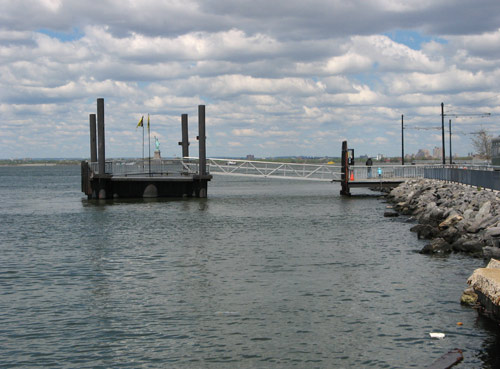
The Red Hook Fairway Market is housed inside a beautifully restored pre-Civil War era warehouse on the waterfront at the end of Van Brunt Street. Above the market, the building is used as office space for businesses and local non-profits, artist work space and luxury residential units. Fairway arrived in Red Hook in May 2006 to much fanfare and enormous crowds. This afternoon, strolling through the clean, spacious aisles, along the well-stocked displays and colorful chalkboards touting store specials — such a stark contrast with the cramped, combativeness of the Upper West Side location — I could not help but be a little envious.
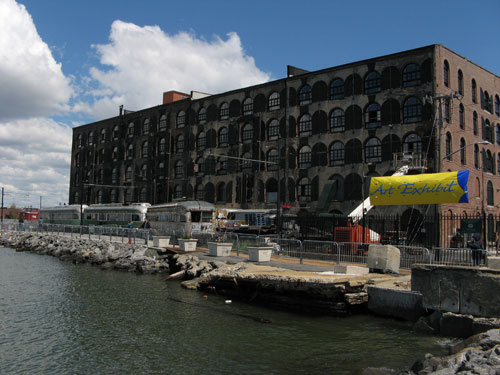
A view of the Verrazano-Narrows Bridge (and a few ducks) from the red-brick Beard Street Warehouse at 499 Van Brunt Street, which now houses over 40 businesses, including the offices for the New York Water Taxi (which maintains a dock just outside the Fairway), a glass-blowing studio and gallery, the Brooklyn Waterfront Artist’s Coalition (Red Hook’s premier art venue, and the largest artist-run, not-for-profit art organization in Brooklyn), and the set and costume designers for Blue Man Group.
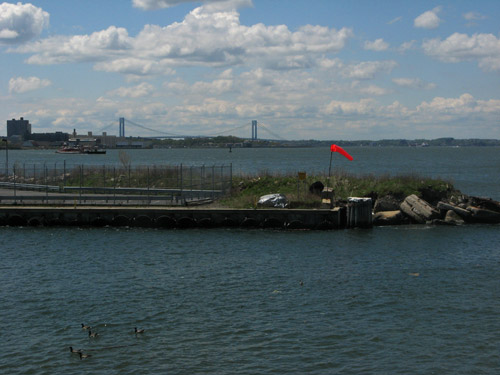
More walking, along the Beard Street pier, on streets scattered with bars, restaurants, galleries and shops, including Steve’s Authentic Key Lime Pie, touted endlessly on the Food Network.
Our group’s numbers dwindled as the gentrified streets gave way to warehouses and desolate looking stretches until we reached the Red Hook Container Terminal, which sprawls along 80 acres of waterfront. The Port Authority of New York and New Jersey leases the terminal in part to American Stevedoring.
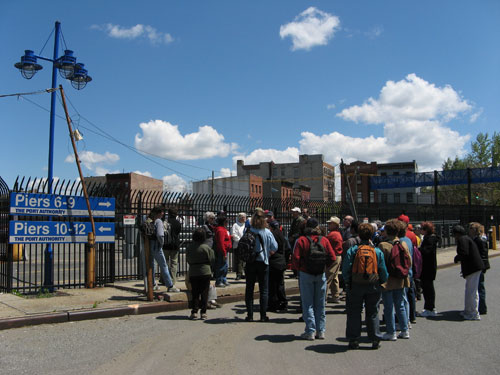
We wound past a couple of community gardens, crossing paths at the BQE with the 5 Boro Bike Tour.
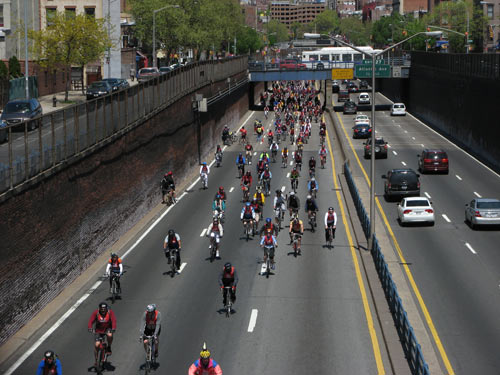
And nearly four hours after we first met, our final stop: the stark contrast of the stately brownstone rowhouses of the Carroll Gardens Historic District — once considered part of Red Hook.
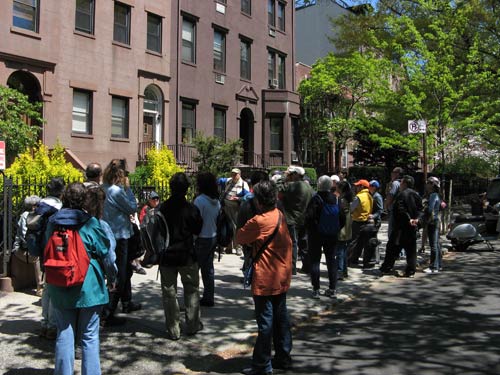
We broke away from the group as they made their way to the subway station, to explore the annual Court Street Fair, sponsored by the Gowanus Canal Community Development Corporation (GCCDC). By summer’s end I’m usually in full-grip of street fair fatigue, but on this brilliantly sunny spring day, I was happy to wander among the stalls, taking in everything from the curious (not a tube sock or mozzarepa stand in sight!) to the unconscionable ($4 for 6 zeppole?!)
Lunch at the newest Carroll Gardens location of Mexican mini-chain Mezcal’s, after which we made a dessert of some more reasonably priced (but still messy) zeppole from one of the Court Street pizzerias.
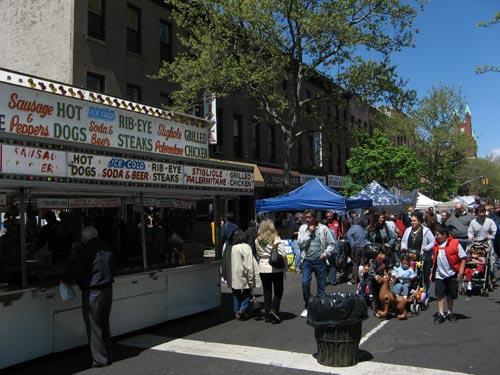
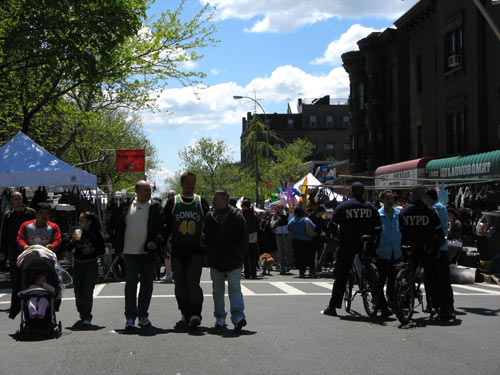
Off the Hook
I joined up for a walk through Red Hook — the peninsula edged by Buttermilk Channel (which separates Brooklyn from Governors Island), Gowanus Bay and the Gowanus Canal at the southern edge of Downtown Brooklyn. The event was sponsored by TAWNY — that’s Take a Walk, New York! — the Neighborhood Open Space Coalition and the Bette Midler-founded New York Restoration Project.
The advertised “light-hearted prowl” — part stroll, part history lesson — began bright and early this sunny morning at the Smith/9th Street station; at 91 feet, it’s the highest elevated stop in the subway system, owing to an antiquated regulation to allow for tall-mast shipping beneath the rails. Good thing for all those clipper ships that sail through Gowanus Creek… (pause)… not!
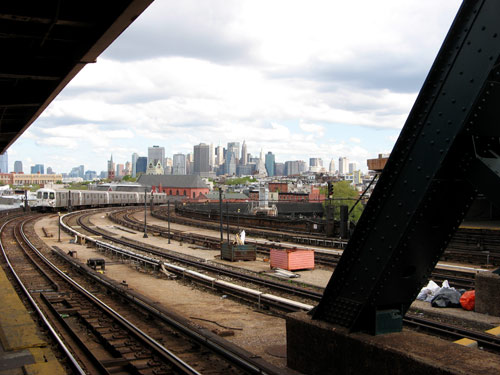
Red Hook native Dave Lutz brought our group — at over two dozen strong, a surprising turnout for 10:00 AM on a Sunday morning — through cobblestoned, residential and industrial streets, past “waterfront” parks… from which the public is blocked access to the waterfront.
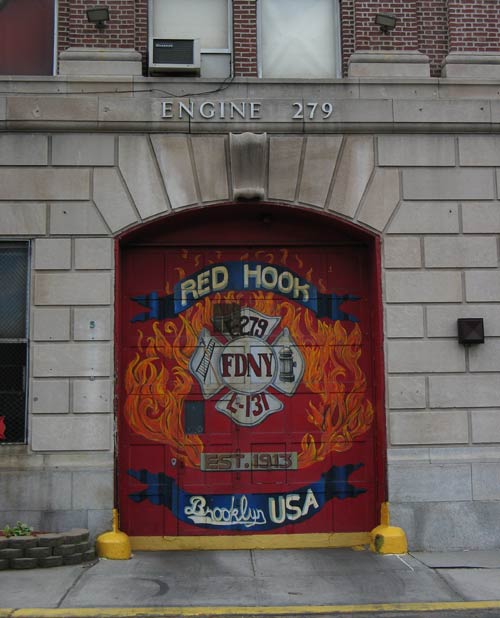
On through the Red Hook Houses, one of the largest public housing projects in the country, first built as a Federal Works Program initiative under FDR. Quite a lot has changed in the area over the past several years, but old perceptions die hard; at one point, one of the walk participants muttered that we should have brought bulletproof vests, earning himself a prompt chiding from our local walk leader.
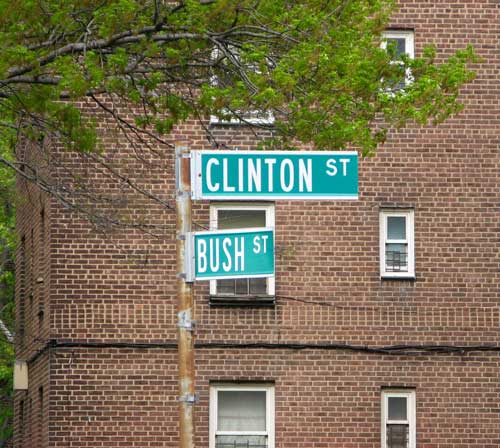
We stopped in at the Red Hook Commmunity Farm and the Sol Goldman Pool (still closed for the season) which opened in 1936, as one of the 11 WPA-funded pools opened under Mayor Fiorello H. Laguardia and Parks Commissioner Robert Moses. Last summer, photographs of the then-named “Red Hook Pool” were included in an exhibit on the city’s public pools at Central Park’s Arsenal Gallery.
Which reminds me that there are still a couple more weeks to check out the exhibitions on Moses (whose Gowanus Expressway cut off Red Hook from Brooklyn proper in 1946) at the Queens Museum and the Museum of the City of New York.
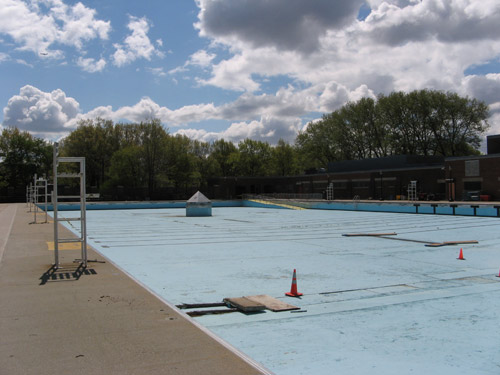
I’d read so much about the variety and quality of food available from the stalls surrounding the Red Hook ball fields that I could hardly believe that I finally made it to this foodie paradise. Unfortunately, my stomach couldn’t quite handle the tacos, enchiladas, huaraches, pupusas, ceviche and grilled corn at this early hour, so I was relegated to just taking in the sights and smells. This time.
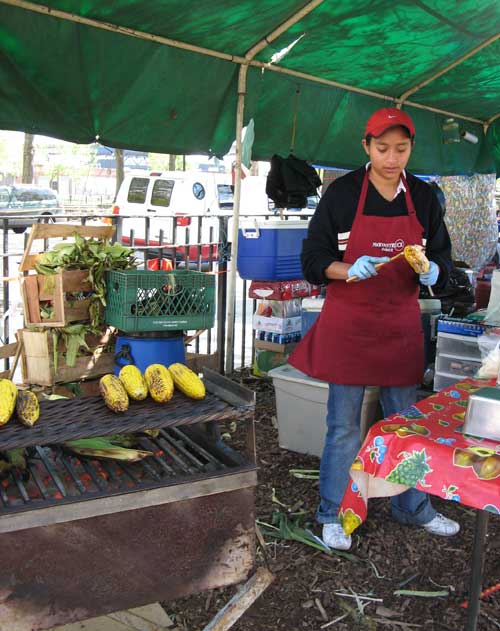
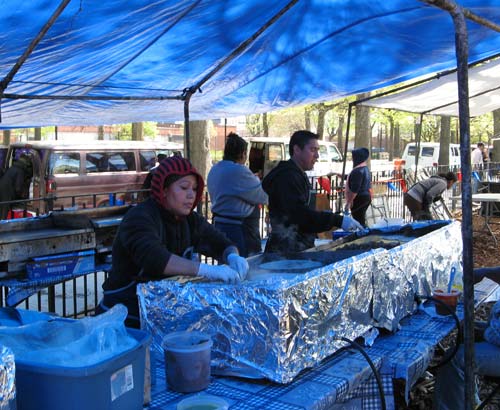
We were brought past the historic shipyard, before which Lutz briefly mounted his soapbox to deliver his unvarnished views on the negative impact a big (blue) box retailer, and accompanying vehicular traffic, would have on this neighborhood with no direct subway access.
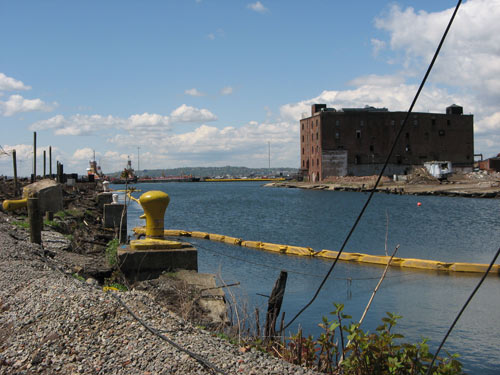
A Grand view
AH generously offered to host JL‘s birthday festivities at her penthouse-floor apartment in the Seward Park Houses on Grand. This complex of a dozen brown-brick highrises sits in an area south of the the Williamsburg Bridge and west of FDR Drive. The cooperatives were sponsored and financed by textile/garment trade unions and the United Housing Foundation, in a drive to create moderately-priced housing for union members; in 1959, initial offerings were priced at about $3,000(!) per unit. The lobbies still feature original Hugo Gellert murals of Thomas Jefferson, Abraham Lincoln, Franklin D. Roosevelt, and Albert Einstein; the upper-level balconies, some outstanding views of Lower Manhattan.
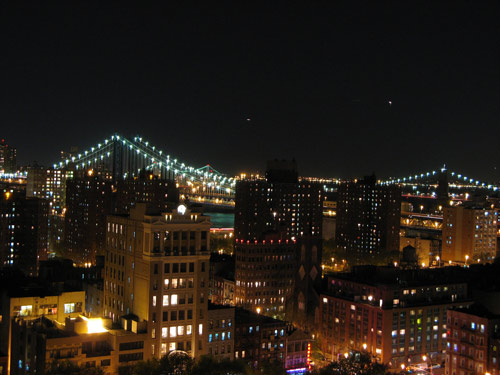
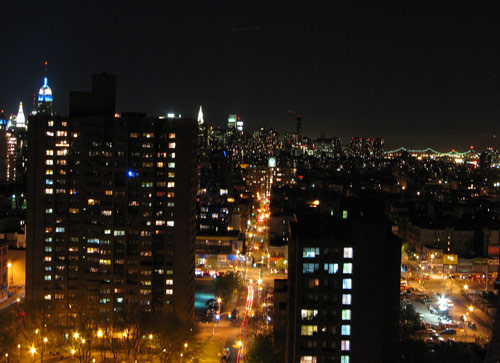
I was last here in September for another birthday, the highlight of which was AH’s home-baked carrot cake. This time, though, in deference to JL’s strict dietary regimen, the cupcakes were brought in from Babycakes. The Lower East Side bakery touts products that are certified Kosher, Parve and vegan, and fully — almost improbably — organic, dairy-free, sugar-free, gluten-free, wheat-free, nut-free and egg-free. How do they do it? Short answer: spelt flour or garbanzo/fava bean flour mix instead of wheat flour; agave nectar or unrefined, unprocessed cane juice instead of white sugar; and soy milk instead of dairy. All of which sounds potentially taste-free, but which is actually far more palatable than one would have any right to expect. In fact, New York magazine caused quite a stir when they declared Babycakes the best cupcakes in the city — that’s best overall! — in 2006.
Happy 30th, JL!
Search
Popular Tags
Categories
Archive
- July 2010
- July 2009
- January 2009
- November 2008
- September 2008
- August 2008
- July 2008
- June 2008
- May 2008
- April 2008
- March 2008
- February 2008
- January 2008
- December 2007
- November 2007
- October 2007
- September 2007
- August 2007
- July 2007
- June 2007
- May 2007
- April 2007
- March 2007
- February 2007
- January 2007
- December 2006
- November 2006
- October 2006
- September 2006
- August 2006
- July 2006
- June 2006